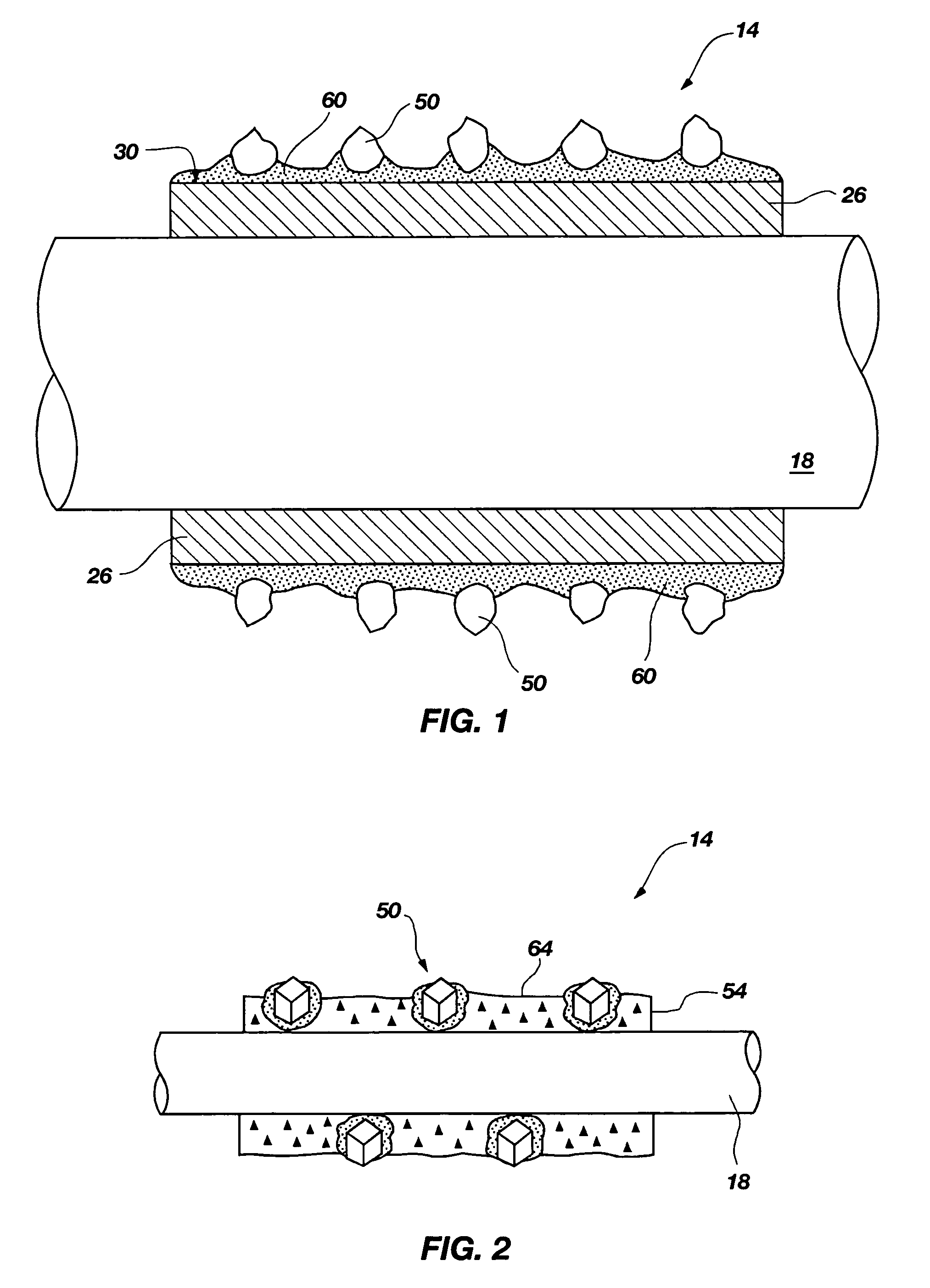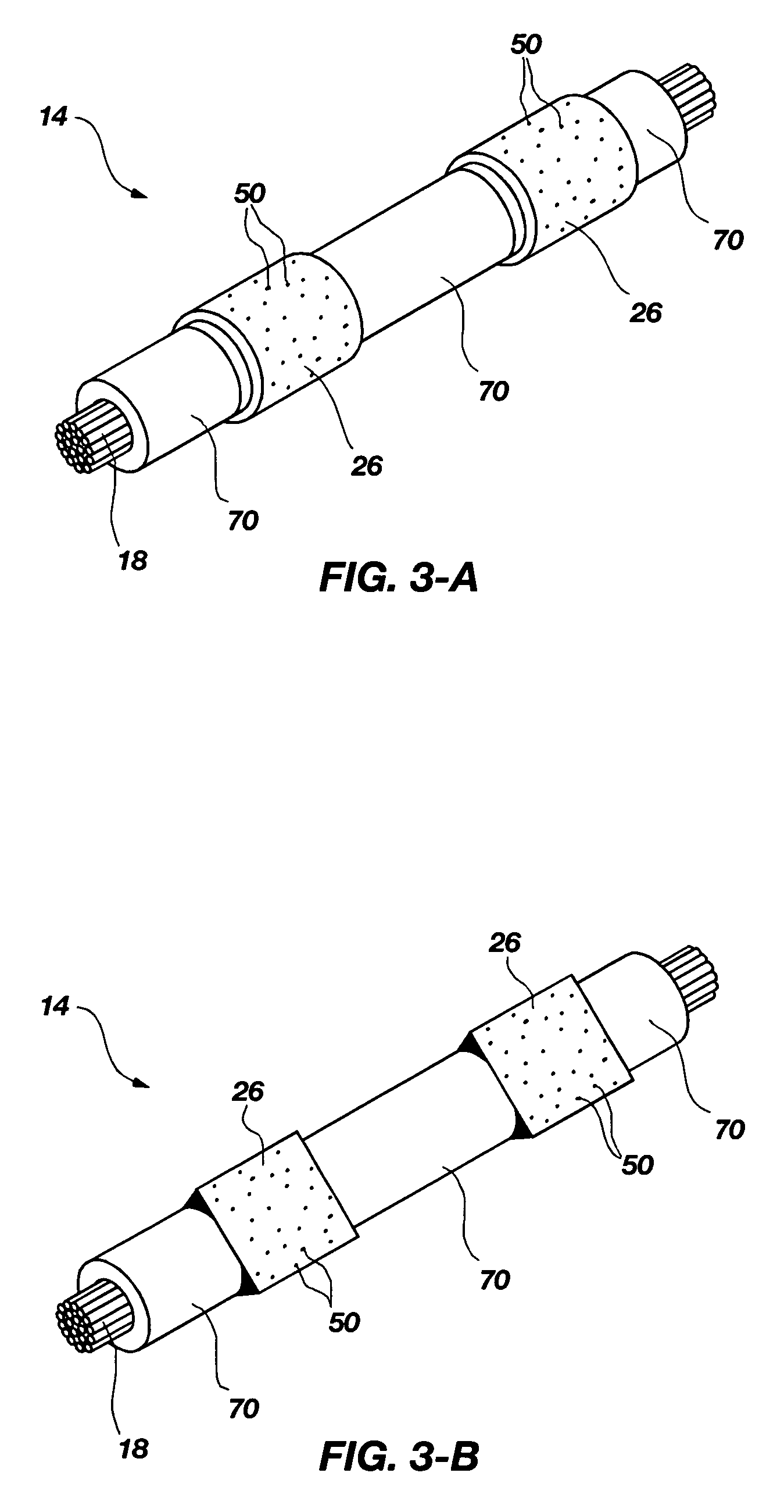Reciprocating wire saw for cutting hard materials
a wire saw and hard material technology, applied in the field of wire saws, can solve the problems of easy knocking off of abrasive particles or diamond grit, unidirectional cutting, unidirectional cutting, etc., and achieve the effect of reducing manufacturing costs
- Summary
- Abstract
- Description
- Claims
- Application Information
AI Technical Summary
Benefits of technology
Problems solved by technology
Method used
Image
Examples
example one
[0099]A typical cut block (e.g., granite) has a dimension of 3 meters long by 2 meters tall. Hence, the area to cut is about 5 m2. A disposable wire saw utilizing the technology of the present invention is obtained that is designed to make two cuts. However, the wire saw will be replaced after making one cut (safety factor equals to 2). In order to cut 10 m2, at least 20 carats of diamond must be consumed. For a typical application, 40 / 50 mesh diamond is used. Each diamond crystal has a size of about 360 microns (0.36 mm). Securely fastened or fitted to the wire saw are 7 beads (pearls), each comprised of steel sleeves that are 6 mm in outside diameter and 6 mm long. The steel beads may comprise other shapes besides a circular or curved cross-sectional area. For example, the beads may comprise a square or rectangular cross-sectional area. The steel sleeve beads also comprise an outside surface onto which diamond grits are brazed bonded.
[0100]The diamond will be spaced with one grit ...
PUM
| Property | Measurement | Unit |
|---|---|---|
| diameter | aaaaa | aaaaa |
| diameter | aaaaa | aaaaa |
| diameter | aaaaa | aaaaa |
Abstract
Description
Claims
Application Information
 Login to View More
Login to View More - R&D
- Intellectual Property
- Life Sciences
- Materials
- Tech Scout
- Unparalleled Data Quality
- Higher Quality Content
- 60% Fewer Hallucinations
Browse by: Latest US Patents, China's latest patents, Technical Efficacy Thesaurus, Application Domain, Technology Topic, Popular Technical Reports.
© 2025 PatSnap. All rights reserved.Legal|Privacy policy|Modern Slavery Act Transparency Statement|Sitemap|About US| Contact US: help@patsnap.com



